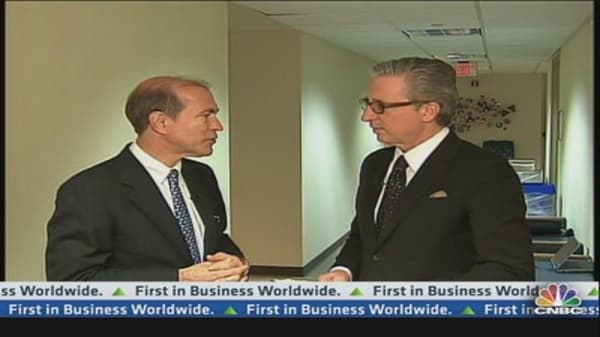Watching what exactly? Many different groups have descended on the SEC and the House Financial Services Committee in the last year. Some groups are telling Washington to do something about a key aspects of market structure (namely, high frequency trading and dark pools are the two hottest subjects); meanwhile, others are urging Washington to do nothing.
Rep. Garrett's idea is to put everyone (exchanges, institutional traders, dark pools, high frequency traders) into the same room and see if a consensus emerges on these hot-button issues.
Another point: Ms. White has a history of being an enforcement lawyer, and may be a bit light on the market structure side. My sense is that some in Washington believe they can help define the agenda before she gets her sea legs under her.
There are three separate round-tables with nearly 20 experts testifying. A few of the major questions likely to be raised include:
1) Is there something wrong with the market structure? Opponents say the stock market has become a casino. Supporters say that spreads have never been tighter, execution has never been faster, and commissions have never been lower. So who's right?
This will be the core debate, but Rep. Garrett has cleverly decided to start with a panel of academicians who will discuss the entire history of trading technologies. Their research will show that there has been hostility and suspicion directed at all new trading technologies — from carrier pigeons in the 1820s, to the railroad used to send information, to the telegraph, to the telephone, to the early forerunners of computers —, and now ultra-fast computers. At each stage, some market participants have stood up and said, "Someone somewhere knows something I don't know, and I'm furious about it!";
2) High Frequency Trading (HFT): there will be lots of debate about how HFT allegedly manipulates the market. There will be calls to slow down trading by enacting a minimum holding period for stocks (one second for everyone!). There will be calls that those who stuff the market with bids and offers that are never executed should be subject to a tax.
My bet is that none of this will gain any traction at the SEC. However, it's certainly clear there will be more surveillance tools that will be developed to monitor the markets and look for those few "rogue" HFTs that might blatantly violate market manipulation rules.
3) Dark pools: Certainly there's no love lost between NYSE or NASDAQ, yet one thing they (and their competitors at Direct Edge and BATS) agree on is that dark pools have an alarmingly high percentage of the trading volume, somewhere between 35 and 40 percent;
The exchanges believe that allowing such volume in the "unlit" market is bad for the"lit" markets and for consumers, and want some kind of limit. Some are floating a "trade at" rule, which would require dark pools to post price or volume improvements over the "lit" market. This, too, is unlikely to get much traction with the SEC this year;
4) Less mistakes with technology: the embarrassing mistakes in the past year with the BATS IPO, the Knight tech glitch, and the NASDAQ Facebook offering all centered around issues with complex trading technology. There are more than a dozen stock exchanges, and 40 dark pools, which must interact with thousands of customers around the world. These systems must be constantly updated and tested. The possibility that something can go wrong goes up as the technology gets more complicated and the amount of players increases.
The SEC has been floating regulations that will codify technology requirements for exchanges, as well as dark pools. The purpose is to have the technology go through a rigorous testing process...that the technology (programs) do what they say…and reduce problems not just with individual exchanges but also how the technology interacts with other exchanges.
The idea is to a) hold them to a higher standard, and b) introduce rule with teeth if there is a failure.
There should be widespread support for broader regulations to reduce technology issues;
5) Trading in increments other than a penny: stock trading volume is terrible,and getting worse.
Here's a startling statistic: the top 100 stocks do about 95 percent of all stock exchange volume, the other roughly 4,000 stocks trade the other 5 percent.
Crazy, eh? Some are arguing that companies should have the right to allow their stocks to trade in increments other than a penny, say, 2 cents, or 5 cents. This might attract more trader interest, and potentially more analyst coverage.
I'm not so sure how much more analyst coverage it would attract, but I do find it a bit strange that, for example, Sirius XM Radio (SIRI), a $3.00 stock, trades in increments of a penny, while Google (GOOG), an $800 stock, also trades in a penny increment.
If SIRI (the company) had no objection to the stock trading at, say, 2 cent increments, I think it should at least be considered, particularly for extremely low-volume, small cap stocks.












